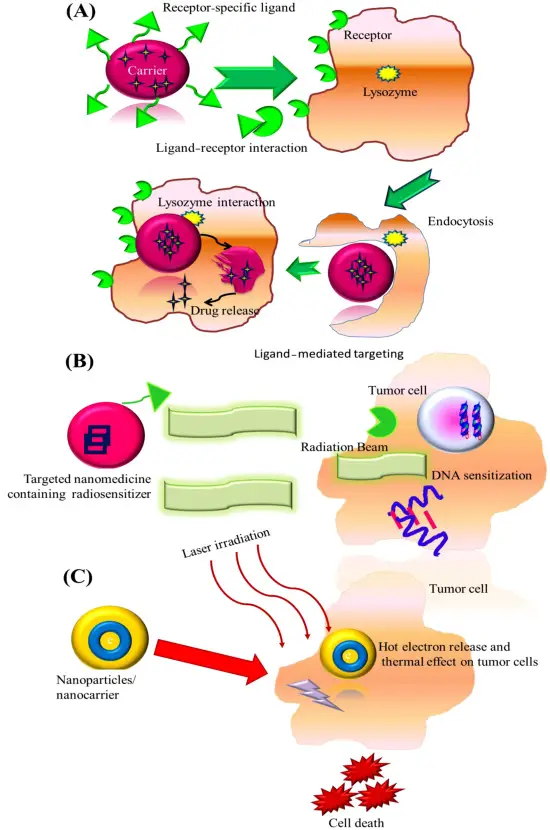
The gradual shift of healthcare industry towards the development of biologics is a well-known fact. Owing to this shift, there are over 1,000 cell and gene therapies which are being developed for the treatment of various disorders, majority of them being oncological disorders, cardiovascular disorders and neurological disorders. Additionally, over the last decade, multiple immunotherapies have been developed, and have led to a decrease in lung cancer and melanoma-related mortality. However despite their many benefits, biologics present a number of challenges, such as drug delivery-related complexities, systemic toxicity and compromised efficacy owing to the inaccurate delivery to the target site. To address such challenges, a number of innovator companies in the biopharmaceutical sector are actively engaged in identifying targeted drug delivery strategies for biologics.
Several industry and non-industry stakeholders have already developed targeted drug delivery devices that allow to deliver high and sustained concentrations of biologics (including gene therapies, cell / stem cell therapies, immunotherapies and therapeutic proteins) to its desired targeted area, hence increasing efficacy and reducing systemic toxicity. Examples of devices designed for the targeted delivery of biologics include Advance® CS, ExtroducerTM microcatheter, HelixTM biotherapeutic delivery system, ImmunoPulse® IL-12, SmartFlow® neuro ventricular cannula and MailPan®. This intersectional research looking at both devices and biological therapies is likely to determine the future success of biological therapeutics and can improvise the ways to treat chronic diseases.
Stakeholders Involved in the Development of Such Devices
This domain is featured by the presence of 33 players (industry / non-industry) that are presently engaged in development of targeted drug delivery devices for biologics. Around 30 devices are approved / under development for targeted delivery of biologics. Majority of these devices are intended for delivery of anti-cancer medication, including a number of gene therapies and cell-based interventions.

To know more about the stakeholders and different type of targeted drug delivery devices for biologics, check out our report here.
The Rising Research Activity in the Field of Stem Cell and Gene Therapies and Likely Opportunities for Targeted Drug Delivery Device Developers
Till date, around 380 clinical studies have been completed / are ongoing for evaluation of various gene therapies (194) and stem cell therapies (183), which are likely to be developed for intra-organ / targeted delivery. In terms of the number of patients, over 21,300 patients have been enrolled in trials focused on this domain.

Over 80 stem cell and 120 gene therapy developers, are likely to enter into strategic partnerships with targeted drug delivery device developers over the coming years. Majority (21) of these stem cell therapy developers are headquartered in the Asia-Pacific region. However, on the other hand, majority (64) of the gene therapy developers that are likely to partner with targeted device developers are headquartered in North America.

To know further about the insights of this analysis, check out the report here.
Likely Growth of Targeted Drug Delivery Devices for Biologics Market
The market for drug device combination products in the organ-based / targeted drug delivery devices for biologics market is expected to be worth around USD 5 billion in 2030. Analysis of the opportunity in terms of therapeutic area revealed that 70% of the current sales-based revenues reported within the market, is driven by applications related to various cardiovascular disorders (including heart failure and myocardial ischemia). This is followed by neurological disorders (19%).

Moreover, in 2022, the market is likely to be driven by catheter based devices, followed by encapsulation based delivery devices. This trend is likely to persist in the future as well. The North American market currently holds the dominant share (95%) in the overall market (in terms of revenues generated from product sales); it is further anticipated to grow at an annualized growth rate of 77% till 2030. The figure given below presents the distribution of market for drug-device combination products across type of device, target organ, therapeutic area and key geographical regions.
To know further about the market forecast analysis, highlighting the likely growth of the targeted drug delivery devices market for biologics, for the time period 2020-2030, .
Check out the report here.
You may also be interested in the following titles:
- STING Pathway Targeting Therapeutics and Technologies
- Point-of-Care Diagnostics Market for Infectious Diseases by Indication
- Single-cell Sequencing Services and Technologies Market, 2020-2030
The post Targeted Drug Delivery Devices: An Attractive Option for Improving the Efficacy of Biologics appeared first on Blog.
